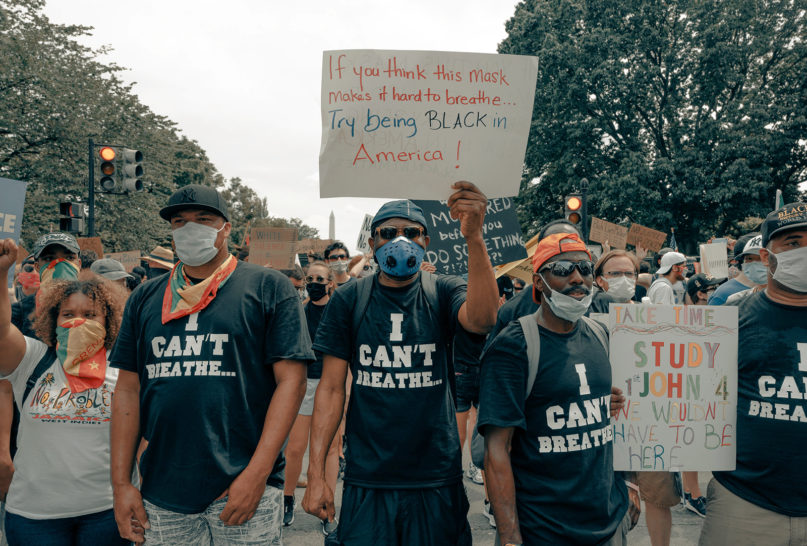(RNS) — The normally simple, normally unconscious act of drawing breath has come to define the United States’ most pressing problems. The country has been racked by COVID-19 — a disease that often steals the breath — and the protests that followed the death of George Floyd, whose dying words were “I can’t breathe.” Even for those of us looking on, our cumulative discomfort and chronic stress have often provoked an anxiety that causes our breath to tighten and speed up.
For centuries, world religions have focused on breath, in meditation, mysticism and as a metaphor for the divine, recognizing breathing as the core of life, and perhaps reality itself. “Merest breath. All is but mere breath,” begins the Book of Ecclesiastes in biblical scholar Robert Alter’s 2019 translation.
Here are insights on breath and breathing from seven religious traditions.
Christianity

Pope Francis blows inside an amphora containing holy oil during a Chrism Mass inside St. Peter’s Basilica, at the Vatican, on April 18, 2019. During the Mass the pontiff blesses a token amount of oil that will be used to administer the sacraments for the year. (AP Photo/Alessandra Tarantino)
In the New Testament, breath symbolizes the presence of the Holy Spirit, the third “person” of the Trinitarian God, nowhere more explicitly than in the Gospel of John, when Jesus appears to his disciples after he is resurrected. John says Jesus “breathed on them and said to them, ‘Receive the Holy Spirit.’”
“The Spirit ‘blows where it will,’” said the Rev. James Martin, a Jesuit priest and editor-at-large of America magazine, quoting again from John’s Gospel. “It has its own direction and purpose, often unknown to humanity.” Martin called this spiritual understanding of breath “a timeless and beautiful metaphor of God’s freedom and power,” and noted that Benedictine monks are taught that while chanting, which slows the breath, they should be mindful of the Spirit moving in and out of them.
Martin also pointed out that scholars believe that those who died, like Jesus, of crucifixion are asphyxiated, the cause of death in Floyd’s case. “I hope that all Catholics, all Christians, see the deep connections between the death of one innocent man at the hands of civic authorities in Minneapolis and another in Jerusalem,” he said.
A Pentecost icon at St. George Orthodox Cathedral in Toledo, Ohio. Photo by Fr. Ted/Flick/Creative Commons
Those whose practice includes the Jesus Prayer, a central prayer of Eastern Orthodox Christianity, often inhale as they recite the words, “Lord Jesus Christ, Son of God,” and exhale on “have mercy on me” a pattern with roots in a late Byzantine mystical tradition of contemplative prayer known as hesychasm, or “divine tranquility,” in Greek.
The Jesus prayer is typically said many times a day, and outside of worship, making it “portable,” according to the Very Rev. Maximos Constas, interim dean at Holy Cross Greek Orthodox School of Theology in Brookline, Massachusetts. At a time when the new coronavirus “stigmatizes and even demonizes breathing,” Constas said, the prayer is especially useful.
It also reminds the supplicant of the place of God. “We know the respiratory system is closely connected to the heart,” he said. Breathing deeply while invoking the name of God reinforces that “the spirit is diffused through the whole self, but has its center point there. That’s where we are connected to God.”
Islam

Whirling dervishes of the Mevlevi Order perform during a Sheb-i Arus ceremony in Konya, central Turkey, on Dec. 16, 2018. Every December the Anatolian city hosts a series of events to commemorate the death of 13th-century Islamic scholar, poet and Sufi mystic Jalaluddin Rumi. (AP Photo/Lefteris Pitarakis)
“Every breath, every moment, you need to be conscious of God, who put the breath in you,” said Ali Asani, professor of Middle Eastern studies and religion at Harvard University. “Islam” means “submission,” he pointed out. “Through breathing in and breathing out, you are constantly renewing your submission to God.”
This conception of breath is represented in praying the Shahada, or profession of faith, as the practitioner exhales and inhales in rhythm while reciting, in Arabic, “There is no God” and “but God.”
Saimma Dyer, a British Sufi Muslim who has lived with an autoimmune disease for a decade, says exhaling in prayer helps her release “tensions and constrictions,” while inhaling “allows in the divine.”
Other Muslim practices known as dhikr (Arabic for “remembrance”) involve multiple recitations of a set of phrases, including 99 names for God.
Practicing dhikr in a ritualistic, communal setting following particular breathing rhythms is a hallmark of the mystical, esoteric branch of Islam called Sufism, through a tradition called habs-i dam, Arabic for “keeping one’s breath in recollection.” It features practices including directing one’s attention to breathing from parts of the body like the heart, shoulders or navel, and ideas like the suggestion that to be “alive,” a breath needs to be completed with attention focused on God.
Judaism
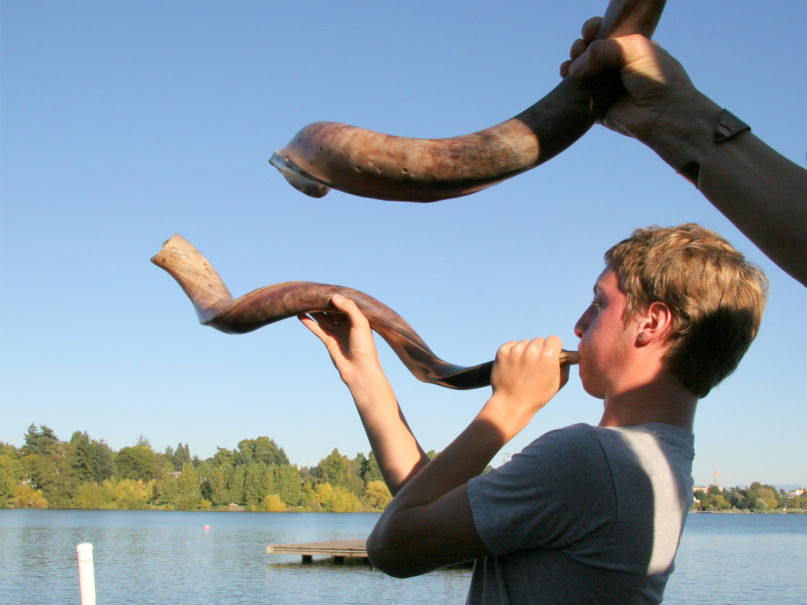
Congregation Eitz Or’s annual tashlich gathering at Greenlake in Seattle includes a shofar service. Photo by Joe King/Creative Commons
Hebrew words for breath tend to straddle the spiritual and physical realms: Ruach means both breath and wind. Neshamah and nefesh each also refer to literal breath as well as “soul” or “spirit.” Early in the Book of Genesis, God first appears as a wind, a sign of spirit. He blows into the first man’s nostrils to animate him with “the breath of life.”
“Just as God exists through some manifestation of breath and air,” said Rabbi Jonah Dov Pesner, director of the Religious Action Center of Reform Judaism in Washington, D.C., “so too the human exists through breath and air.”
Pesner calls for a “conspiracy” — from the Latin root for “to breathe together” — to restore justice in the United States. “If to be given breath is a gift from God,” he said, “to allow our fellow humans to lose their breath because of something preventable is an act against God.”
Buddhism
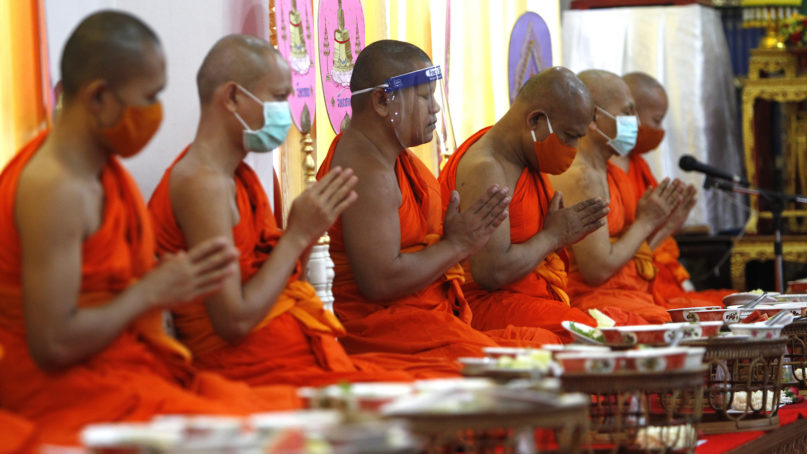
Buddhist monks wearing face masks as a preventive measure pray at Phleng Temple on May 11, 2020, in Bangkok. (Photo by Chaiwat Subprasom/SOPA Images/LightRocket via Getty Images)
An often-cited Zen Buddhist meditative prompt is, “Breathing in, I am aware of my body. Breathing out, I am aware of my body.”
Gautama Buddha, for whom the faith is named, is said to have taught “mindfulness of breathing” or ānapānasati — an early form of the meditative techniques that remain a central practice. “The only refuge that I have is my breath,” said Devin Berry, a dharma teacher at the Insight Meditation Society in Barre, Massachusetts, who counseled health care workers in New York during the coronavirus crisis there. “I find mindfulness, compassion and wisdom — just by breathing.”
The Pali Canon, a collection of ancient texts developed between 400 and 200 BCE, details 16 distinct breathing practices that modern Buddhists still use, including visualization, elongating or shortening the breath, and holding the body in calming positions.
Hinduism
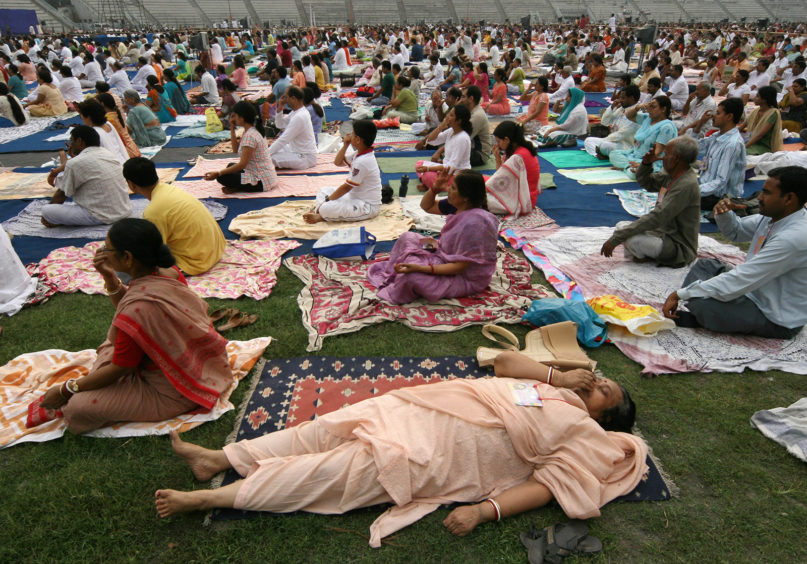
Participants perform “pranayama,” a yoga breathing exercise, as they attend a yoga workshop conducted by Indian yoga guru Ramdev, unseen, in Kolkata, India, on March 21, 2007. (AP Photo/Bikas Das)
Prana, often translated as “the breath of life” or “the principle of life,” is found in Sanskrit texts dating back to the year 1000 BCE. “Prana connotes ‘that which makes something animate,’” said Laura Harrington, a professor of religion at Boston University. “Prana in the yoga tradition is actively manipulated through a practice called pranayama,” or “stretching” of the breath.
This stretching goes deeper than modern secular uses of yoga, to beliefs about reincarnation. About 300 CE, the Indian philosopher Patañjali included manipulation of breath as part of the process of gaining liberation from the cycle of rebirth.
“To be able to have control of your breath, both literally and metaphorically, is to have control over how you live your life, whether and how you are reborn, and what kind of state of consciousness you have while you’re living,” said Harrington. “There is presumed to be an inherent connection between breathing and your mental state. By controlling your breathing, you can change your consciousness.”
Harrington calls this capacity for self-cultivation “the ultimate human right.”
Taoism
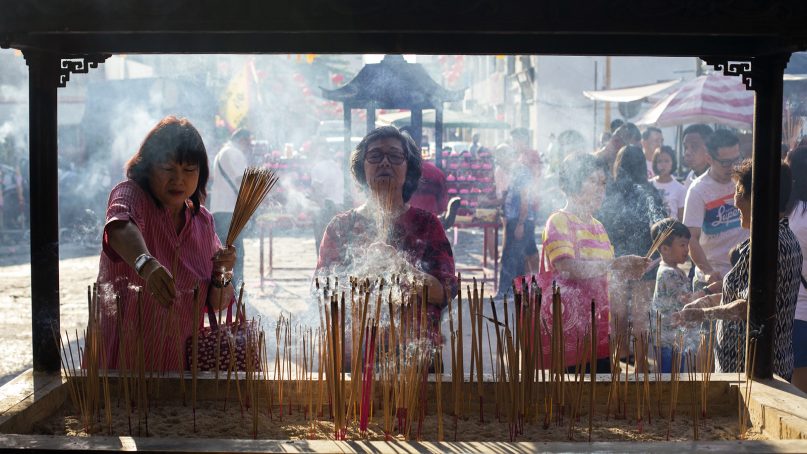
Women burn joss sticks at the Goddess of Mercy Taoist temple in Penang, Malaysia, on Feb. 6, 2019. RNS photo by Alexandra Radu
Taoism describes five “vital breaths” that build, preserve and extend life in the heart, spleen, lungs, liver and kidneys — organs that in turn are connected with the five essential elements: fire, earth, metal, wood and water. The Chinese tradition, which goes back to the sixth century BCE, also teaches that “nine unsettled breaths” — including anger, fear, joy, thoughts, heat, cold and hard work — distract from the physical process of generating and preserving life force.
Boston University’s Harrington said that the Asian traditions’ focus on the breath can be affected by events such as the COVID-19 pandemic. “It can be quite anxiety-provoking to watch your breath because you’re watching it through the lens of fear … or it becomes an act of politics to watch your breath because we actually have the luxury of paying attention to our breath.” Breathing, she said, “becomes a symbol of having personal agency in our culture.”
Native American religion
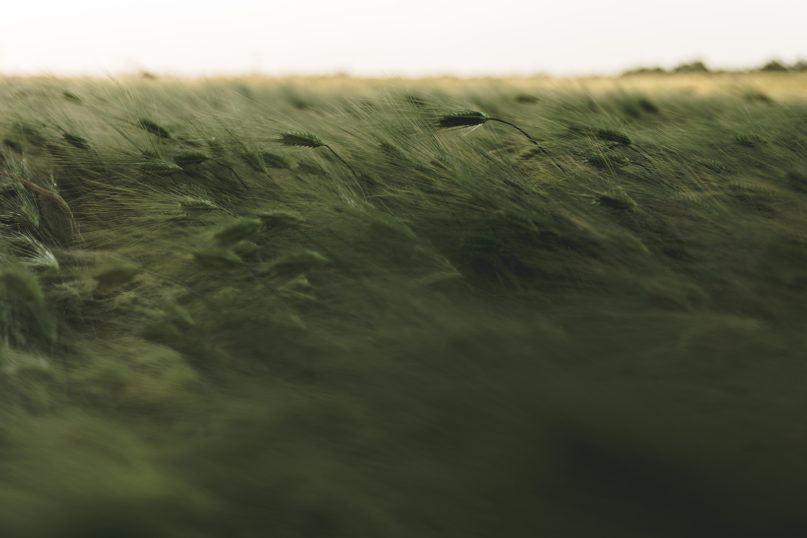
Photo by Stanislav Kondratiev/Unsplash/Creative Commons
The Apache, a nation of six southern Plains tribes, traditionally believe that when people tell the stories of their ancestors, they must choose their words carefully because “when you’re saying those words, you are actually breathing the breath of the ancestors,” said Rosalyn LaPier, a professor of environmental studies at the University of Montana and a member of the local Blackfeet tribe.
Though Native Americans’ beliefs are very diverse, the Apache are representative of many tribes’ understanding that “there’s a connection between breathing, air and wind being connected to the supernatural realm,” said LaPier, author of “Invisible Reality: Storytellers, Storytakers, and the Supernatural World of the Blackfeet.”
Diseases such as COVID-19, which has disproportionately affected the Navajo, can figuratively blow in from other realms. “Oftentimes Indigenous people have thought of (epidemics) as something from the supernatural realm,” said LaPier, “but not from their supernatural realm.”
